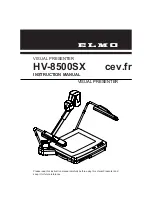
4-17
DSC-D700 (UC,CE)
4-9. FUNCTION DESCRIPTION OF PS-536 BOARD
The PS-536 board is a DC/DC converter board that produces the power for the
camera board of a DSC-D700 digital still camera.
A voltage is produced as the UNREG1 and UNREG3 voltages used on the camera
circuit board.
The operating voltage is used as
_
8.5 V, 15 V, and circuit voltages supplied to
CCD. CAM 3.3 V (analog), CAM 3.3 V (digital), or MTR 5 V is used as the lens
driving power.
Moreover, the digital 3 V power of a 2.5-inch liquid-crystal display function and the
5 V power used on the system control board are also produced on the PS-536 board.
These powers are turned on and off from the system control board using a PWRC
(CAN) signal. Each power is not adjusted and controlled in the operating voltage
range.
The concrete functional operation is described below.
IC601 (MB3785A) employs a 46-pin, SQFP-type IC package for the switching
regulator controller operation. IC601 has a 4-channel internal controller. Using all
functions, IC601 produces the voltage described above.
1. Switching regulator functions
1) Reference voltage circuit
The reference voltage circuit generates a temperature-compensated reference
voltage (2.5 V) by the power supplied from the power pin (pin 18) and uses it
as the internal operating power of IC. The reference voltage can also be sent
out from pin 19 to the outside as a signal at the Vref pin.
2) Chopping wave generator circuit
This circuit generates an arbitrary chopping oscillation waveform by
connecting a capacitor and resistor for timing to pins 17 and 16. The
amplitude of this waveform is 1.3 to 1.9 V. The waveform is input to the
PWM converter in IC to drive each channel.
3) Error amplifier
The error amplifier detects the output voltage of a switching regulator and
outputs a PWM control signal. The in-phase input range is wide and the
voltage can be set easily. Moreover, the gain and voltage can be freely set by
connecting a feedback resistor and capacitor from the output pin of the error
amplifier to the inverting input pin.
4) PWM converter
Channels 1 and 2 have two inverting input pins. The PWM converter is a
voltage-to-pulse converter that controls the ON time of an output pulse
according to the input voltage using a voltage comparator.
Channels 3 and 4 have one inverting input pin. The PWM converter is a
voltage-to-pulse converter that controls the ON time of an output pulse
according to the input voltage using a voltage comparator.
An output transistor is turned on while a chopping wave is lower in level than
the output signal of an amplifier and the signal at the DCT pin. The
maximum output current is 30 mA.
Содержание Cyber-shot PRO DSC-D700
Страница 1: ...Vol 1 1st Edition DIGITAL STILL CAMERA DSC D700 SERVICE MANUAL ...
Страница 6: ......
Страница 88: ......
Страница 114: ......












































